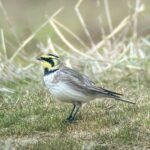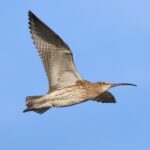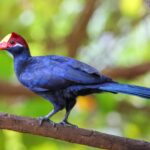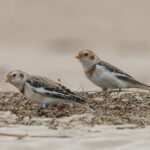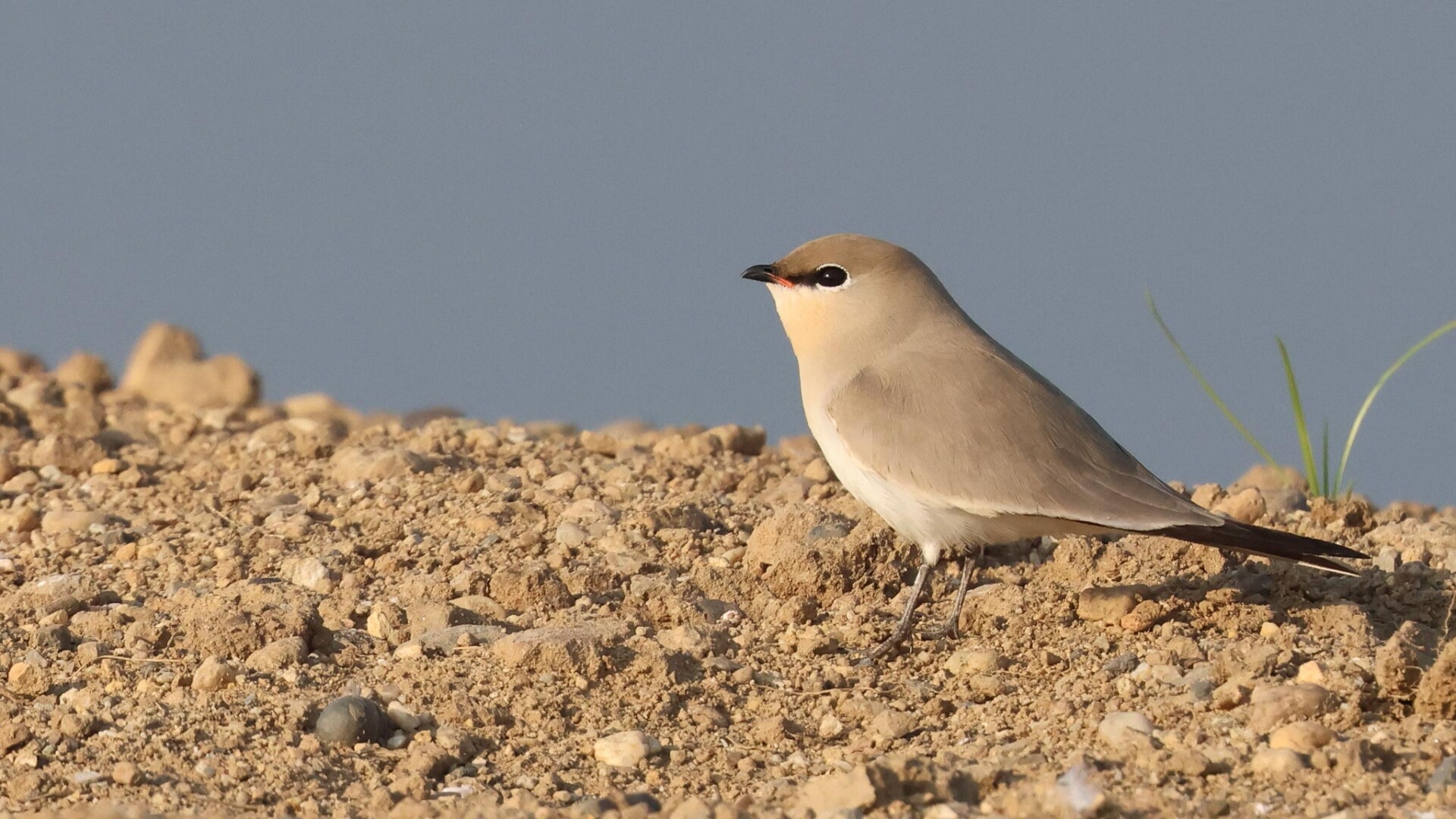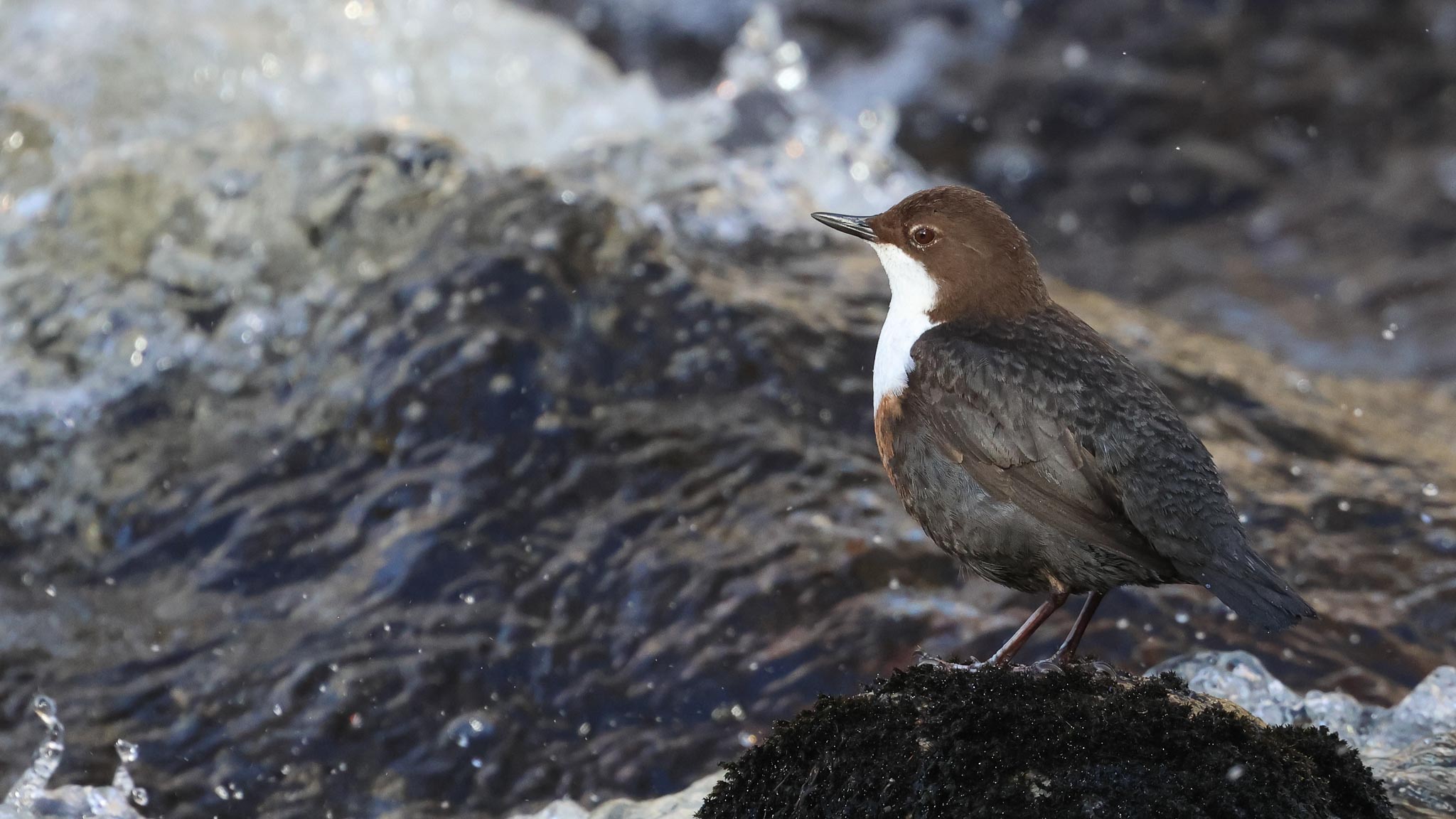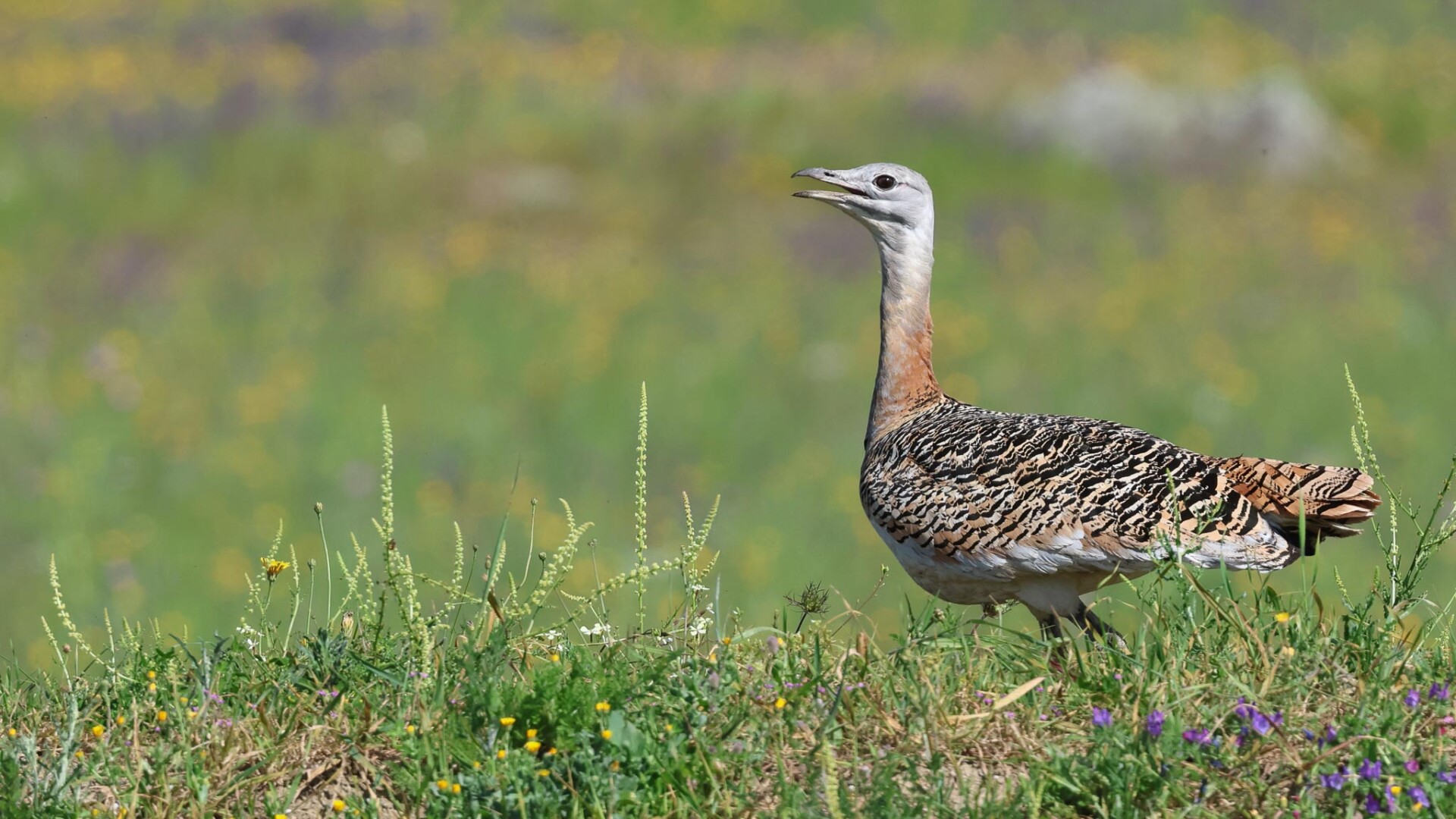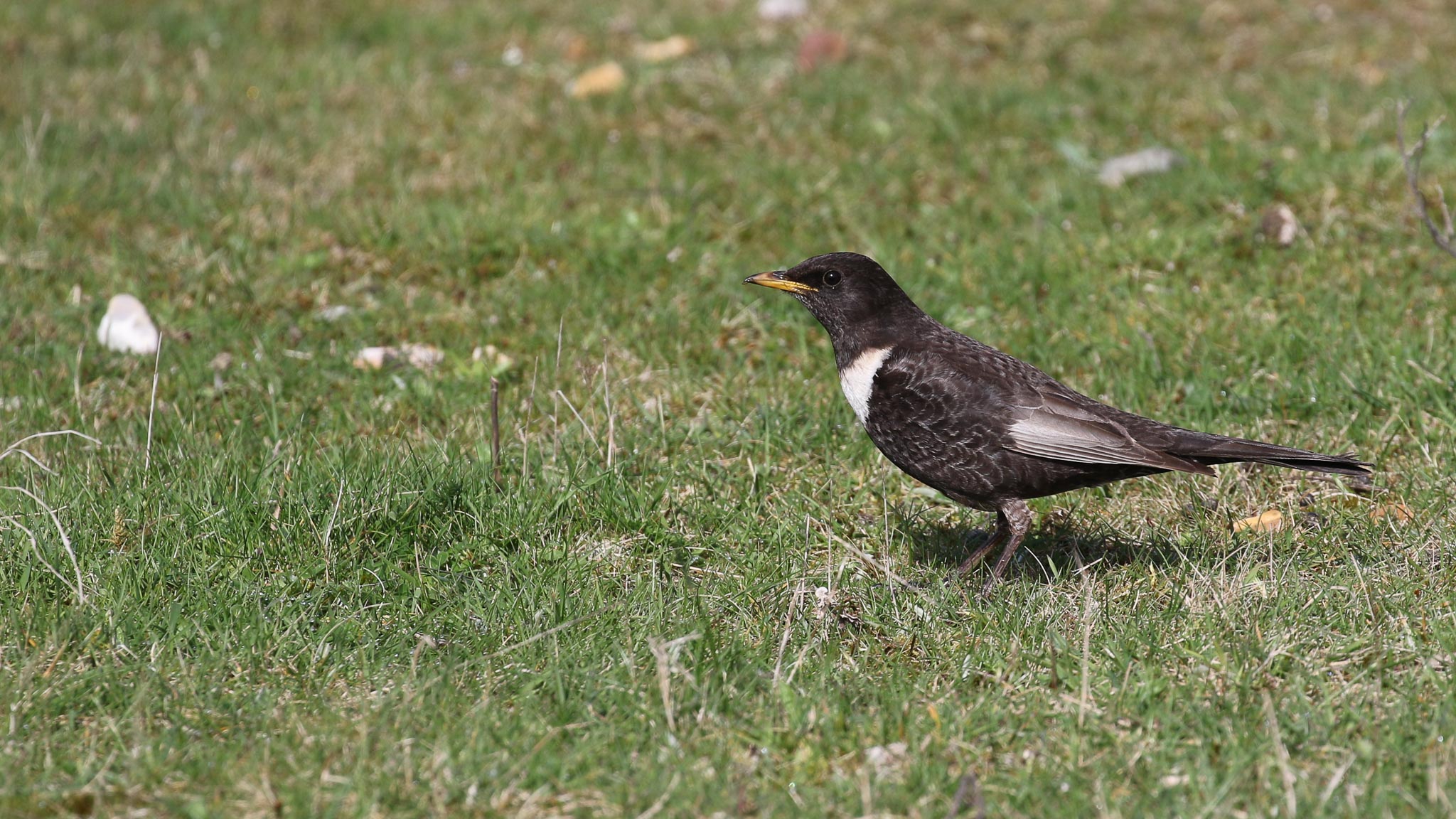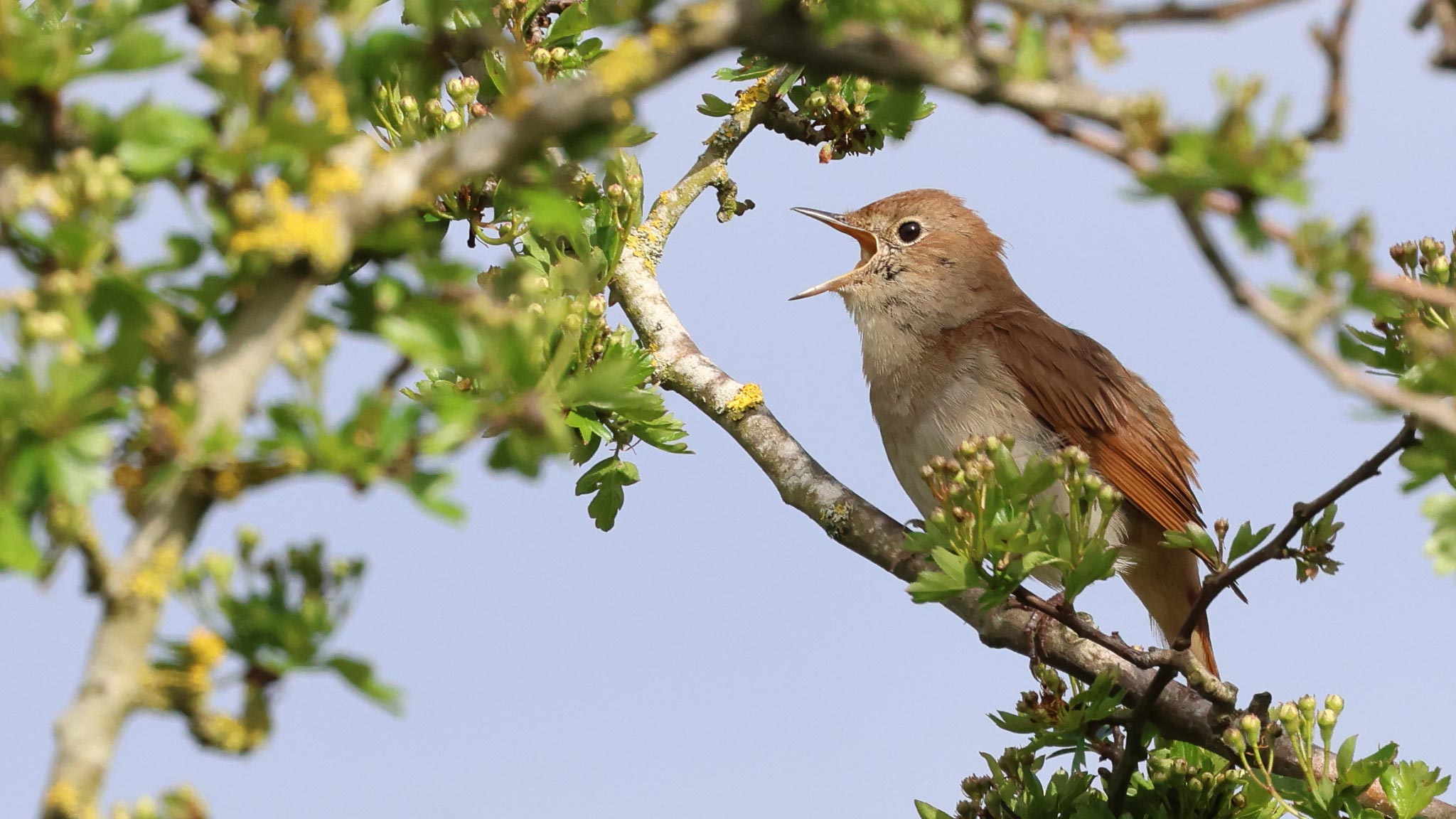Day 3 of a 5 day Autumn Tour today. Back on the coast, we made our way west to Titchwell this morning, to explore the reserve. It was a lovely day – a bright start, plenty of sunny intervals with only patchy cloud.
The car park was not too full when we first arrived, but we knew it would fill up fast. We walked round the corner to explore the overflow car park before it got too busy. Several Blackcaps were feeding in the brambles, which are now laden with fruit. We saw both black-capped grey male and rusty-capped browner female/young birds. A Chiffchaff was flycatching from an elder tree. There were also a few Chaffinches around the bushes and a smattering of tits – a Coal Tit flew over and a flock of Long-tailed Tits made its way across. The highlight was a male Bullfinch which fed quietly in the brambles just long enough for everyone to get a good look at it in the scope.
 Common Darter – basking in the morning sun
Common Darter – basking in the morning sun
As we walked out along the main path, there were lots of insects in the vegetation along the bank, including several dragonflies, enjoying the early morning sunshine and out of the wind in the lee of the trees – Migrant Hawkers and Common Darters. Out on the grazing meadow, there were lots of Lapwings and several Curlew in the long grass.
The grazing meadow pool is still pretty dry – still no sign of the landowner reflooding it (it is not part of the reserve). The Lapwings seemed to like it here too, but it doesn’t seem to attract much else. A cock Pheasant looked beautiful catching in the sun on the edge of the vegetation. A little further along, we stopped to scan the reedbed pool. There was a good raft of Common Pochard and Tufted Duck out there again today, plus a Little Grebe and a couple of Mute Swan cygnets.
We made our way to Island Hide first. The water has dropped and with a strong westerly wind recently the remaining water has been pushed over to the far side of the reserve. Consequently, the waders were a little distant today and reduced in number. We found a couple of small groups of Dunlin and two Ringed Plover with them, but not so many small waders and no sign of the Little Stints today. A little group of Avocet were asleep over towards the back. There were only a couple each of Ruff and Black-tailed Godwit.
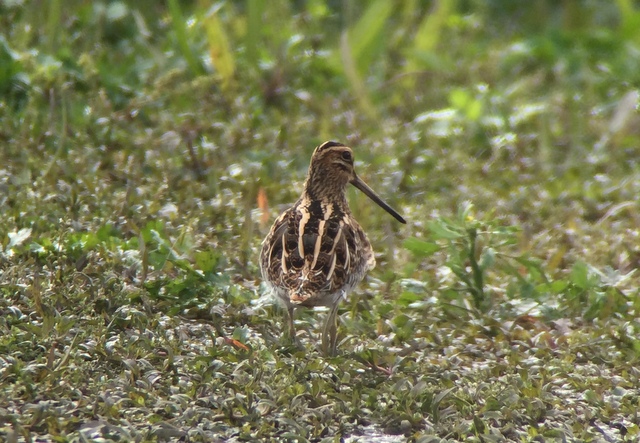 Common Snipe – not so well camouflaged on the fresh green vegetation
Common Snipe – not so well camouflaged on the fresh green vegetation
The edge of the reeds nearest the hide had been lacking in activity initially, but a Common Snipe dropped in and we all turned to have a good look at it. It was nervous out in the open, and not particularly well camouflaged in the lush green vegetation out on the exposed mud. It was trying to feed, but kept stopping and looking round, before hurrying across.
While we were watching the Snipe, a sharp-eyed member of the group spotted a Water Rail just behind it, working its way along the edge of the reeds. It kept disappearing into the reeds out of sight, before emerging again, never venturing too far out into the open. At one point, when it disappeared from view, it started calling – loud squealing, a little reminiscent of a pig. It was great to hear it as well as see it.
 Water Rail – working its way furtively along the edge of the reeds
Water Rail – working its way furtively along the edge of the reeds
It was a bit breezy for Bearded Tits to be showing their best today, but they have been seen regularly feeding along the edge of the reeds in recent weeks. We eventually found one doing just that today, but it had chosen the reeds at the very far side of the freshmarsh!
The number of ducks on the freshmarsh has been steadily growing in recent weeks, as birds return for the winter. There are already a good number of Teal and Wigeon present. At this time of the year, the males are still mostly in dull, female-like eclipse plumage, meaning they are not looking their best. Amongst them we also found a few Shoveler and a Gadwall or two. Two paler brown ducks at the back of the freshmarsh, with swan-like necks and rounded heads, were a couple of Pintail.
From round at Parrinder Hide, we added a couple more birds to the day’s list. Right over in the back corner, we found a Spotted Redshank asleep amongst the ducks and gulls. At first, all we could see was its red legs and its very pale underparts catching the sun. Very occasionally, it would wake up for a second and flash its long, needle-fine bill. A little later, when we looked back, it had multiplied – three Spotted Redshanks asleep!
Out in front of the hide, just along the bank, four geese were feeding. Most of the geese here are Greylags, but one of the four was slightly smaller, with a darker head and smaller, darker bill. It was a lone Pink-footed Goose and it was great to see it alongside the Greylags to compare and contrast. Unfortunately, it appeared to have an injured wing, so it was more likely a bird which had spent the summer here rather than a returning migrant. Despite this, it was a harbinger of things to come.
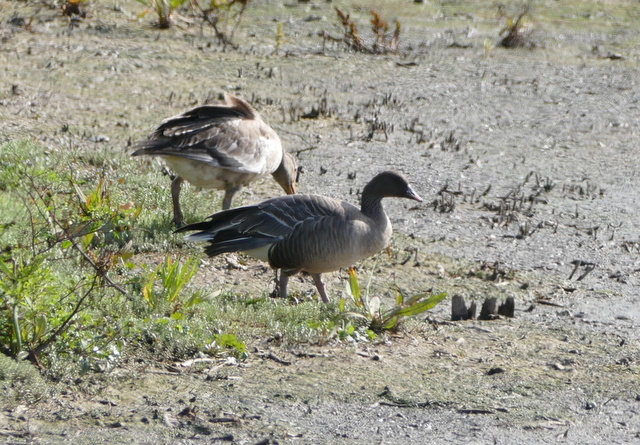 Pink-footed Goose – this apparently injured bird was with the local Greylag
Pink-footed Goose – this apparently injured bird was with the local Greylag
We checked out the other half of Parrinder Hide as well, but the Volunteer Marsh was pretty quiet. A few waders consisted of mostly Common Redshank and Curlew, plus a couple of Grey Plover and a single Bar-tailed Godwit.
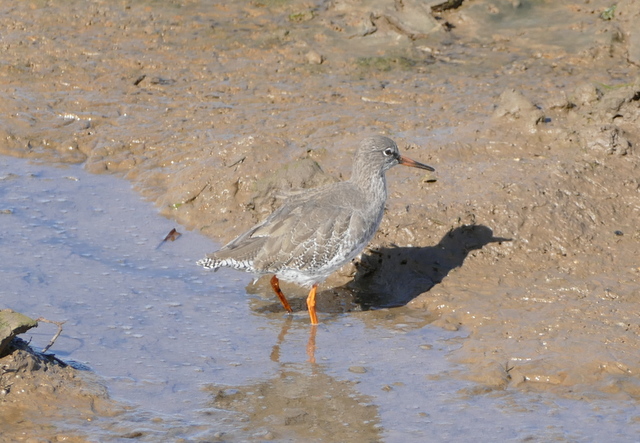 Common Redshank – one of the few waders to favour the Volunteer Marsh
Common Redshank – one of the few waders to favour the Volunteer Marsh
As we got back to the main path from Parrinder Hide, we saw a larger flock of waders flying in from the direction of the beach. They headed straight for the freshmarsh, whirling round for a while before settling on the mud, a mixture of Bar-tailed Godwits and Knot. They shuffled nervously for a short while. It was not high tide, so presumably they had been disturbed from the beach, and shortly afterwards we saw them flying back out there.
There was more activity on the tidal pools. This seems to be the preferred feeding place for the Black-tailed Godwits which remain on the reserve at the moment. One particular individual came right down in front of us, feeding. It looked around when the cameras started firing off and even raised its wings just enough to give us a great flash of its black tail.
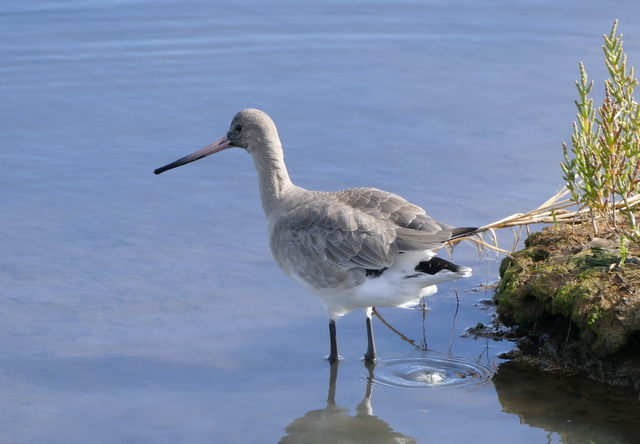 Black-tailed Godwit – helpfully flashing its black tail for us
Black-tailed Godwit – helpfully flashing its black tail for us
This seems to be the preferred place at the moment for most of the waders to roost when they are pushed off the beach. Clustered round the muddy islands were little groups of Dunlin with a few Turnstone and Ringed Plover in amongst them. Further over, the Oystercatcher were gathered separately on the saltings. In front of them, on a muddy spit, was where the Grey Plover had chosen to rest. While scanning through the Grey Plover, we came across a bird asleep with them, face on but with a much paler white front. When it woke up and started preening our suspicions were confirmed, a very elegant Greenshank.
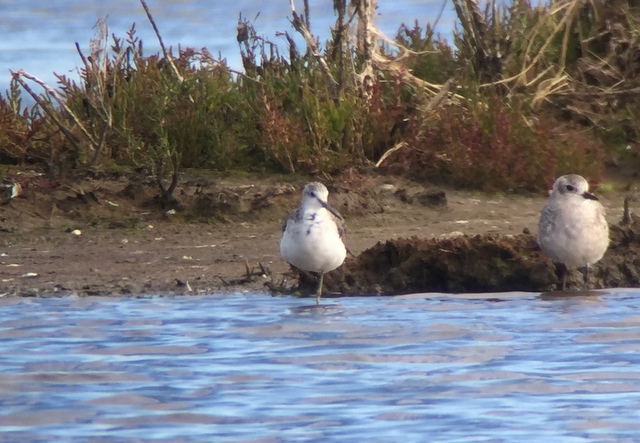 Greenshank – roosting with the Grey Plover on the tidal pools
Greenshank – roosting with the Grey Plover on the tidal pools
Suddenly, a flock of birds appeared from the beach again and whirled round over the Tidal Pools. It was great to watch them – mostly Knot but with a couple of much larger Bar-tailed Godwits and a single black-armpitted Grey Plover in amongst them. After circling round a couple of times, they landed on the same muddy spit. Again, the Knot shuffled nervously in a little gang before they seemed to gain confidence and settled down to bathe and preen.
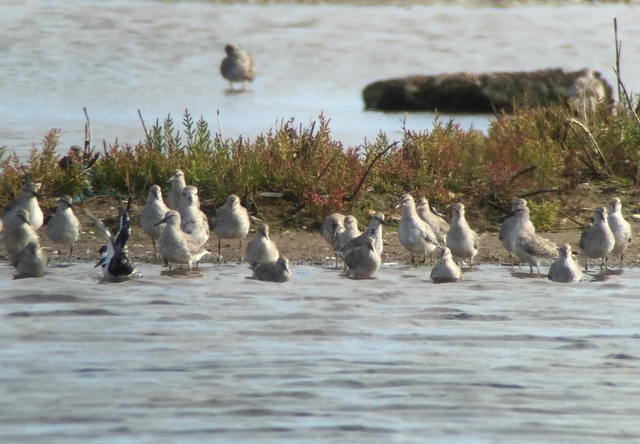 Knot – a nervous flock whirled over the tidal pools before eventually settling
Knot – a nervous flock whirled over the tidal pools before eventually settling
The tide was coming in, but the rocks were still not covered by the time we got out to the beach. However, we could see why the waders had been pushed off so early – a little phalanx of photographers had made their way right out onto the rocks. We did see a couple of Sanderling running along by the waves on the other side of the beach and another four which flew past just offshore, very pale silvery grey above and white below.
Carefully scanning, we managed to pick up a few birds on the sea today. A single drake Common Scoter was just offshore and the yellow top to its bill showed really well in the sunshine. A smart summer adult Red-throated Diver also appeared just off the beach and again the lighting was just perfect to be able to catch its red throat as it turned. There were also several Great Crested Grebes out on the sea, starting to look increasingly pale-faced. A Sandwich Tern flew past just offshore.
While we were standing on the sand, we heard a slightly hard but ringing ‘teu’ call and looked up to see a small brown bird flying towards us over the beach. It circled overhead and we could see that it was a Lapland Bunting. We see them more generally in winter, so this was an early one but not abnormally so. They can be scarce, so this was a great bird to see. Unfortunately, it didn’t land but seemed to turn towards Brancaster before coming back round behind us into the sun and disappearing over the saltmarsh towards Thornham Point.
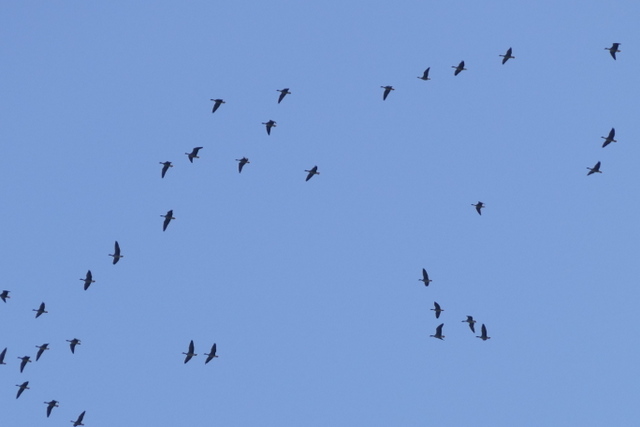 Pink-footed Geese – small flocks were flying in off the sea all afternoon
Pink-footed Geese – small flocks were flying in off the sea all afternoon
While we were on the beach, we also heard the distinctive high-pitched honking of Pink-footed Geese and looked up to see a skein of about 50 birds coming in over the sea. Unlike the unfortunate bird we had seen earlier on the freshmarsh, these were migrants arriving fresh on their journey from Iceland. It was to be a theme of the rest of the afternoon – a fairly constant stream of little groups of mostly 30-50 birds passing east overhead. On our way back later in the day, we even saw a small flock of Pink-footed Geese whiffling down onto Holkham freshmarsh – which may be their home for the winter now. It was fantastic to see such real migration in action, these birds are such a major part of winter birding in Norfolk.
After all the excitement, we were a little later than intended getting back to the car for a late lunch. Afterwards, we headed out again to the East Trail and Patsy’s Reedbed. We stopped briefly by the visitor centre to look at the feeders and apart from the usual selection of finches we were rewarded with a single Siskin hanging on the peanuts, a rather washed out grey-green juvenile. We had earlier heard a few flying over, though not in the big numbers of recent weeks, so it was nice to see one close up for a change. As we walked out towards Fen Hide, three Lesser Redpoll circled over calling.
 Siskin – after so many flying over, it was nice to get a good look at one today
Siskin – after so many flying over, it was nice to get a good look at one today
There was no sign of the Bittern today while we were out at Patsy’s Reedbed – it had been seen earlier, flying over into the reeds at the back. However, there were plenty of duck – more Mallard and Gadwall, including some smart drakes already emerging from eclipse, plus more Shoveler. There were also around 15 Ruff, mostly juveniles in various shades of buff, beige or tawny brown, plus at least three more Common Snipe feeding quietly along the edge. A Marsh Harrier circled over the reedbed and made a pass over the pool, spooking all the birds.
There were also lots of Black-headed Gull dropping in to the water to bathe and preen while we were there. We carefully scanned through them as they gathered, but couldn’t find anything more than the odd Common Gull with them. We were on our way to the Autumn Trail when we glanced back and caught a pair of bright white wings coming in – an adult Mediterranean Gull. It circled over the water a couple of times, before landing out of view in the melee.
We walked round to the end of the Autumn Trail, where it overlooks the back of the freshmarsh. We could hear Bearded Tits calling as we arrived, and two flew over from the bank, across the path and dropped down into the reeds. It was still just a bit too breezy for them to come out, but we could hear pretty constant pinging and caught the odd brief flight view while we stood there.
Scanning the freshmarsh, we couldn’t see anything new but we did get a better view of the Spotted Redshanks. Once again, they seemed to multiply while we were there, with birds dropping in, presumably pushed off favoured feeding areas by the tide. We started off with three and by the time we left we had got up to eight! They were also a bit more active now, preening.
By the time we got back to the car, we didn’t have time for much more today. We made a quick detour up via Choseley, but there was little of note around the drying barns – a group of Collared Doves came down to search for food on the concrete pad, several Pied Wagtails were zooming round, and a few finches perched up on the wires. We had a quick drive round the area – scanning the fields produced a single covey of Grey Partridges and a couple of Red-legged Partridges. A few Brown Hares were mostly lying low. On our way back down to the coast, a small falcon flashed across the field and across the road in front of us, a Merlin, unfortunately too quickly for most of the group to get onto it. Then it was time to call it a day.


